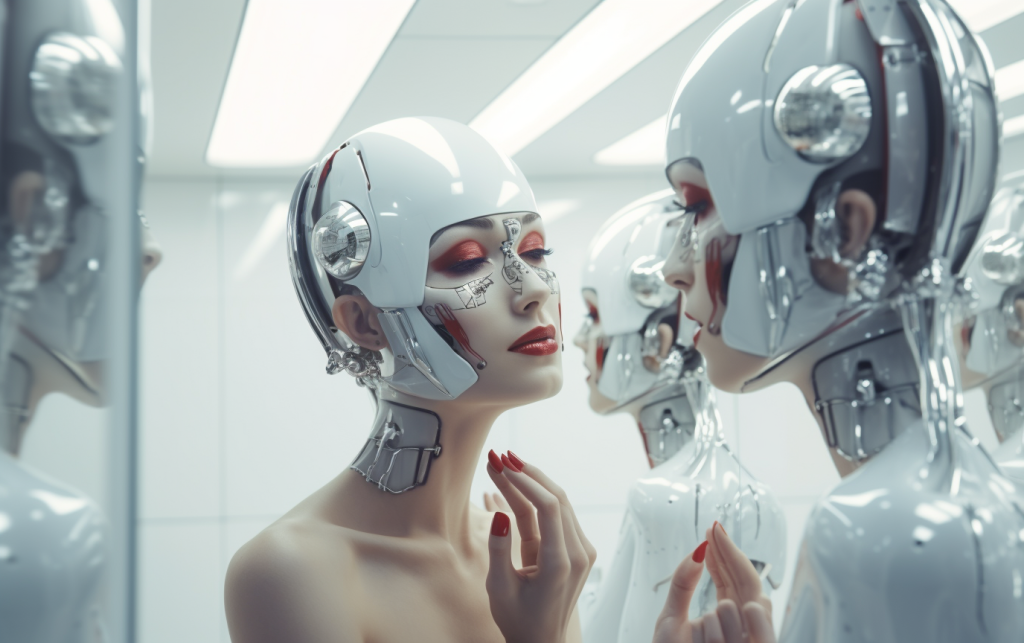The beauty industry is always at the forefront of new ideas and is constantly embracing new technologies and trends. But recently, one of the most surprising new technologies has been the use of robots in hair, makeup, and skincare products. From AI-powered skin diagnostics to autonomous makeup applications, robots are changing the way we think about beauty. No longer a science fiction concept, these high-tech assistants can be found in salons, hospitals, and even in your own home. They can do things humans can’t, with precision, personalization, and efficiency. Whether it’s smart mirrors or facial robots, the future of beauty is here, and it’s automated. Want to know how robots are changing business? Let’s take a look.
The Impact of Robots on Skincare
Robots are revolutionizing skincare, making treatments more precise and reducing the chance of human error. Devices like the Foreo Luna use sonic vibrations to be more efficient than manual cleansing. Meanwhile, clinics are starting to use robotic lasers to treat acne and wrinkles, which can deliver consistent results with little risk. Some luxury spas are even equipped with devices that use artificial intelligence to scan your face and recommend the best serum for you based on the real-time scan results. Whether you apply your skincare at home or in a salon, these new technologies make the process faster, safer, and more effective.
Robotic Applications for Makeup
Imagine a robot that can apply your foundation, makeup, and even lipstick perfectly and quickly. Companies such as L’Oréal and Estée Lauder are already manufacturing robotic makeup brushes, demonstrating the feasibility of this concept. ModiFace’s virtual makeup tool allows users to virtually try on their makeup, which a robotic arm then applies flawlessly. With these methods, there’s no room for error, so eyeliner, foundation, and lipstick are always perfectly even. While they’re not yet commonplace, makeup robots could soon become commonplace in beauty salons and homes around the world.
AI Haircuts: Say Goodbye to Bad Haircuts
Getting the right haircut or blow-dry can be tricky, but now robots can help. In Japan, Kao’s robotic hairdressing system uses artificial intelligence to recognize the shape and texture of your hair and face, then performs a precise cut. On the other hand, automated hair washers in hair salons can make washing your hair hands-free. There are even robotic combs that use sensors to style your hair without damaging it with heat. While human hairdressers will still be needed, these robotic helpers ensure consistency and are less likely to go wrong.
Robots at Work in Beauty Salons and Customer Service
Robots aren’t just for treatments; they can also make shopping more fun. MAC Cosmetics and Sephora are using AI kiosks and chatbots to help customers choose the right items based on their skin type and preferences. In some stores, robots can help customers find the right shelf and even show them how to use products. These new technologies make shopping more fun and personalized and help people make smarter beauty decisions without having to rely solely on store associates.
What are the pros and cons of bees?
Robots have clear advantages, such as precision, speed, and 24/7 availability. But they also have some disadvantages. Touch and intuition are still essential in beauty services, especially when it comes to things like makeup tips and skincare advice. Additionally, some customers find interacting with robots less personal than interacting with humans. But as artificial intelligence advances, these machines are also getting smarter, combining technology with a human sense of touch. Finding the ideal balance between automation and human knowledge is crucial.
When will robots enter the beauty industry?
Robots have enormous potential, and the beauty industry is only just beginning to use them. The future may see 3D-printed skincare masks that adapt to the shape of your face, microrobots that can apply serums deep into your skin, and even AI makeup artists that can create daily makeup based on your mood and the weather. As the cost of technology drops, these new ideas may gradually be adopted by everyday people, not just luxury spas. Whether you’re ready for it or not, the future of beauty will be smart, fast, and increasingly automated.
Conclusion
Robots have become a reality in the beauty industry, revolutionizing the application of skincare, makeup, and hairstyling. These machines are precise and quick, and they’re improving both professional treatments and at-home exercises. They may never fully replace human knowledge, but they do offer exciting new ways to personalize and streamline processes. As technology advances, we can expect to see more groundbreaking innovations that combine AI, robotics, and beauty. The question isn’t whether robots should enter the beauty industry, but how far they can go. Automated beauty tools are the future, and they’re already here.
FAQs
1. Is it safe to use robots for beauty treatments?
Yes, most digital beauty tools are safe because they use sensors and AI to prevent mistakes. However, for more advanced beauty methods, it’s best to have a professional supervise.
2. Can robots replace human beauticians?
No, not really. Robots excel at precise and repetitive tasks, but humans will always be needed in beauty salons for their creativity, empathy, and adaptability.
3. How much do robotic beauty tools cost?
Prices vary widely. Cleansing tools and other home-use devices start at around $50, but professional robotic treatments can cost hundreds of dollars per session.
4. Where can I get a robot for a beauty treatment?
Many high-end salons, dermatology clinics, and high-end beauty stores like Sephora offer robotic treatments. You can also use some of these devices at home.
5. Will fancy robots catch on?
Like electric toothbrushes and hair straighteners, robotic beauty tools are likely to become more popular both at home and in salons as the cost of the technology comes down.

